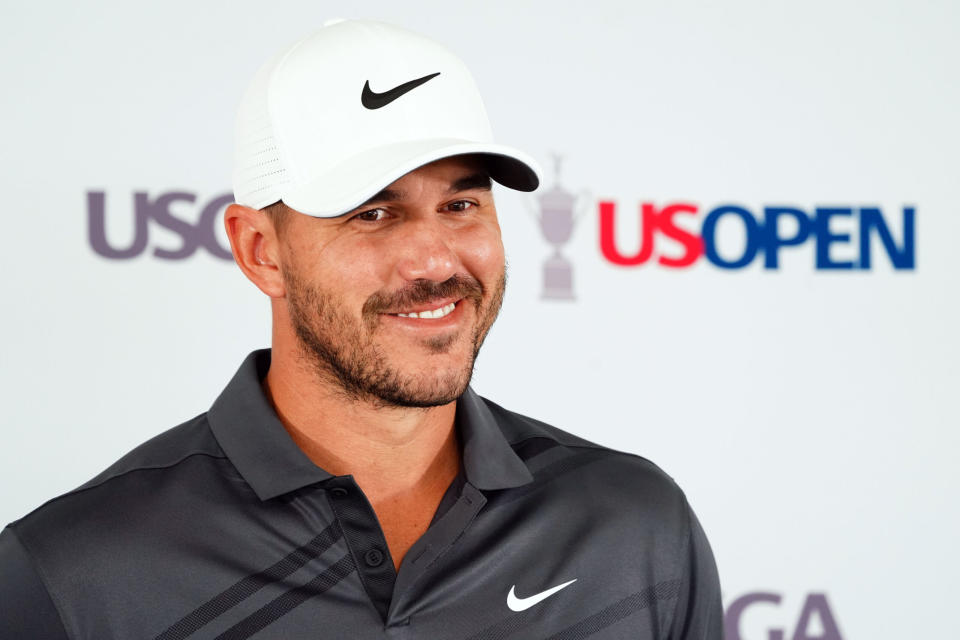Lynch: Brooks Koepka isn’t a PGA Tour player, but his flex on interviews points to a big problem for his former circuit

PINEHURST, N.C. — The difference between obligations and responsibilities isn’t mere semantics about what one must do versus what one should do, and even less so for the investors about to place a heavy hand on the PGA Tour’s tiller. Free marketeers often view obligations as being for employees while responsibilities are for the executive and shareholder classes.
Brooks Koepka is none of the above as it relates to the PGA Tour, since he’s employed by LIV Golf and wasn’t part of the equity grants that made players nominal owners in PGA Tour Enterprises. But Koepka’s actions at the U.S. Open do illustrate a perplexing question that looms over his former circuit, one of many that will need to be addressed in the coming realignment.
At Pinehurst, Koepka declined to do a pre-tournament press conference or a post-round gaggle on Thursday. Players regularly skip media, though not frequently, and for a variety of reasons (though Koepka is alone — but not inaccurate — in saying it’s because the questions posed lack creativity). Sometimes they want to practice before dinner, they’re steamed about their play, they’re avoiding addressing a particular topic, they’re pouting over prior coverage, or they’re rushing to catch a Biden crime family exposé on OAN.

Brooks Koepka hits on the 12th hole during the second round of the U.S. Open golf tournament at Pinehurst No. 2. Mandatory Credit: Katie Goodale-USA TODAY Sports
There’s a generational difference too. Guys who’ve grown up with a direct line to fans via social media are inclined to see traditional media engagement as less important. Veterans who relied on such coverage to boost their profiles, and those of the Tour and their sponsors, are generally more indulgent of the process.
The PGA Tour has no regulations governing how members handle media. Players are trusted to make reasonable accommodations and if an issue arises the Tour will work with all parties to sort it out. So, no obligation. But is there a responsibility? It’s an intriguing question as the Tour morphs from a de facto union into a for-profit business. Koepka’s standoffishness at Pinehurst is easily dismissed as being on-brand for a player who enjoys cultivating a slightly combative, maverick image, but it points to a broader dilemma: PGA Tour players are accustomed to thinking that all they need to do in order to get paid is play golf, and that is about to change.
U.S. OPEN: Leaderboard | Hole-by-hole | How to watch
The investors pumping money into the Tour — not just SSG, but likely the Saudi Public Investment Fund, too — are not doing so to preserve the status quo, in any respect. They will expect players to shoulder more responsibility for the product, to be givers and not just takers. Private equity took over F1 in 2017 and the asks made of drivers grew noticeably greater. Not just media interviews, but marketing content creation, fan interactions, walk-throughs with rooms full of corporate sponsors. Golfers sometimes do things like that, but not often, and usually more in service of their own commercial interests than the Tour’s. That practice is incompatible with the impending expectations of folks who will want a more engaging, fan- and sponsor-friendly product that shows significant growth.
We’re about to find out how much players really believe themselves to be equity stakeholders with a shared interest in growing the Tour’s business, or if they still consider themselves independent contractors beholden to no one but wives and swing svengalis.
Lynch: After Brooks Koepka declined interviews, I suggested one via text. He accepted, and explained why he’s not talking
The scope of player obligations is only one of a number of difficult reckonings that promise to make the next few years considerably more compelling than the rancor of the last few. How many players will be fully exempt? How many tournaments can they access? How many events will be on the schedule? Where will they take place? What becomes of the men and events deemed surplus to new requirements? If the stars only show for $25 million purses, can $8 million prize funds still be expected in weeks overstocked with journeymen? If the post-playoff months are a testing ground for globalizing the product and for team golf, what happens to the stops currently occupying that window?
And that’s before you even get to the thorny issues around how LIV players might be reintegrated into the PGA Tour.
If the Tour’s locker room is a tinder box — and you don’t have to search far for occupants who insist that it is — then the match lies somewhere in that list.
Regardless of whether the Tour’s future lies in a ménage à deux with SSG or a ménage à trois alongside the PIF, change is coming. Among all the things it has botched, LIV got one thing right — it contracted the talent to certain obligations. The PGA Tour will need to figure out how to do the same with guys who are grooved to setting their own schedules, being their own bosses and promoting their own brands, sometimes with only accidental benefit to the Tour. That gap will need to be closed, and the process of doing so could prove every bit as rancorous as the schism that brought things to this overdue juncture.
undefined

 Yahoo Sport
Yahoo Sport 






































